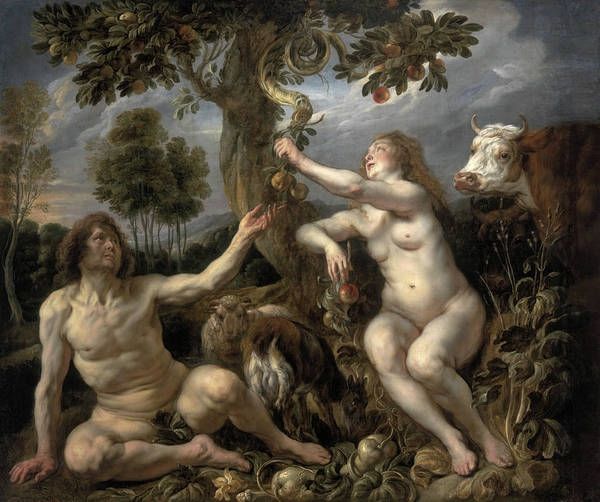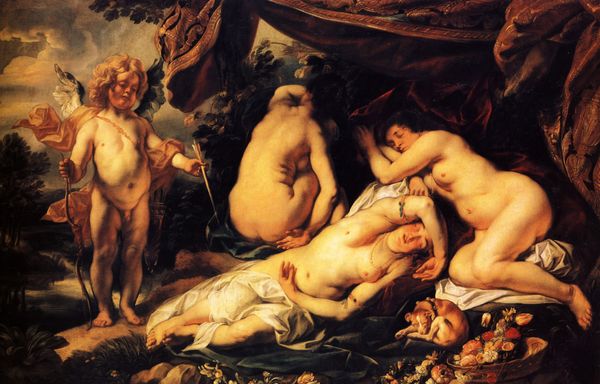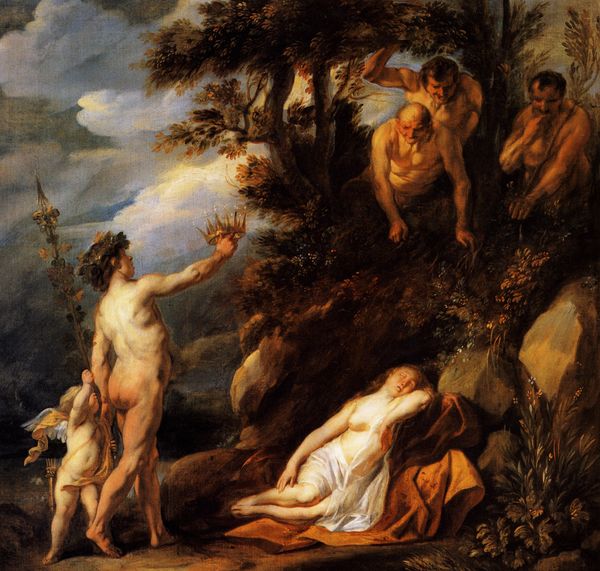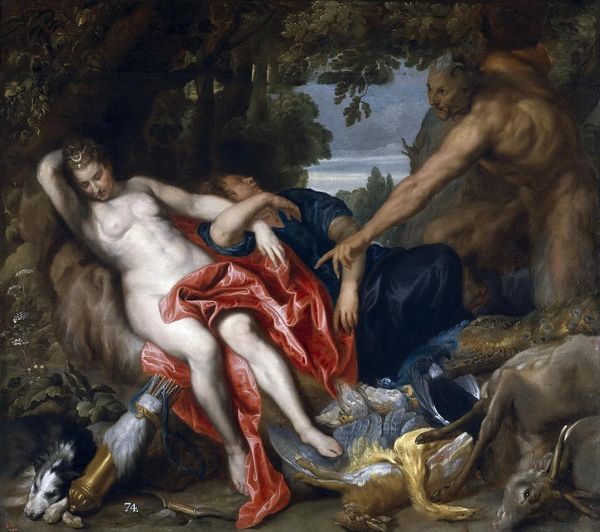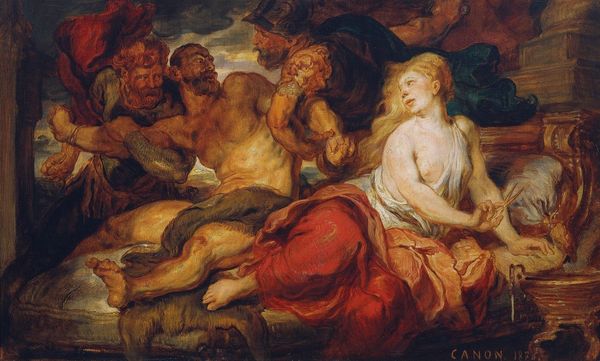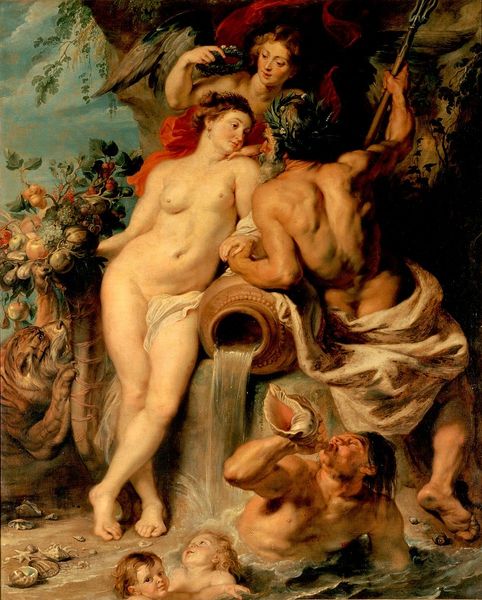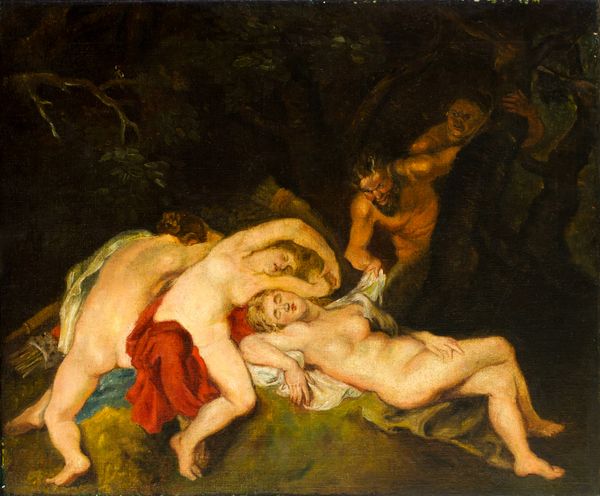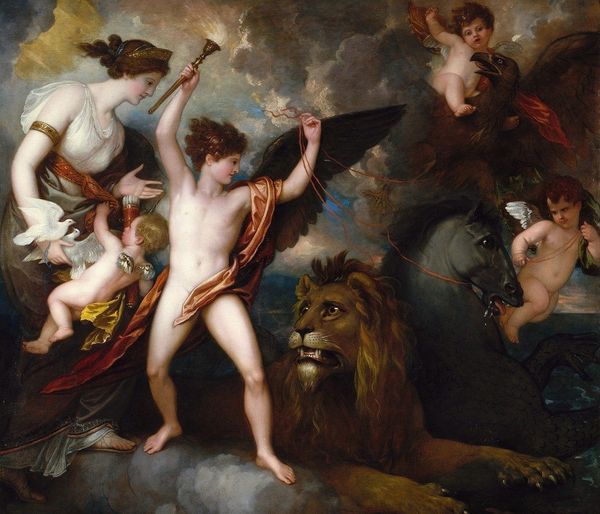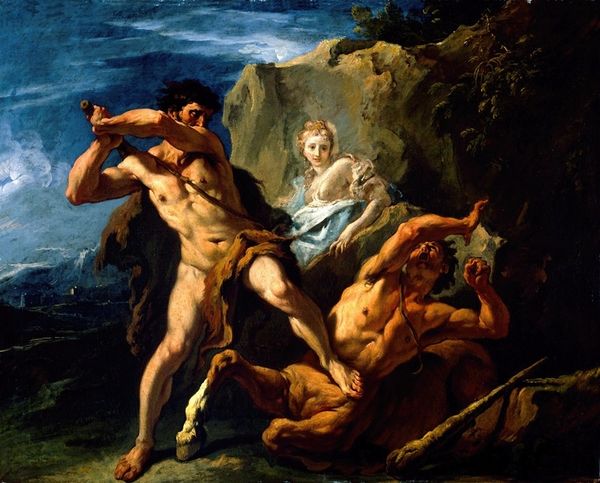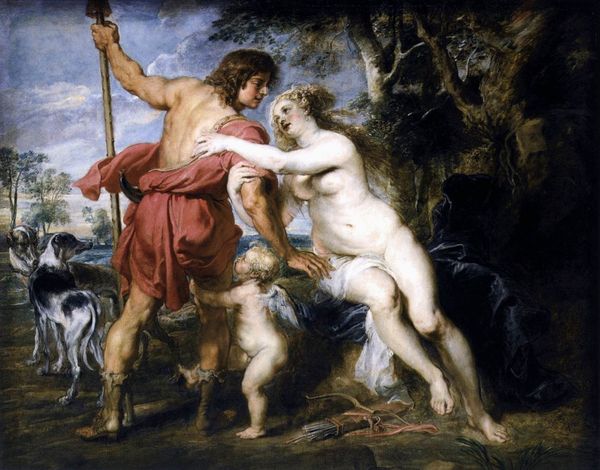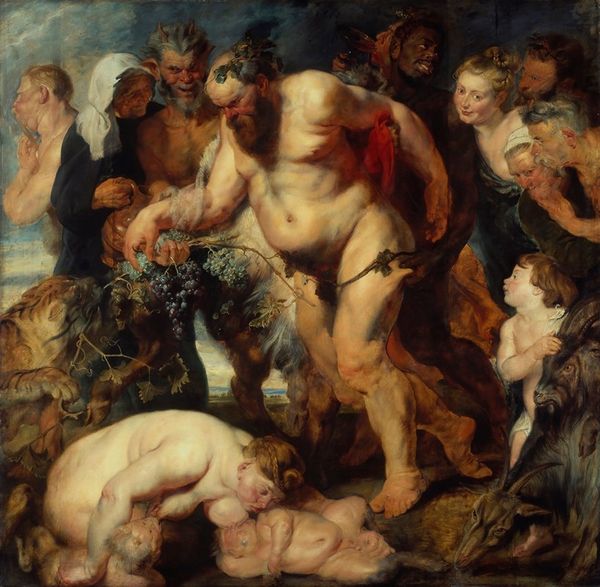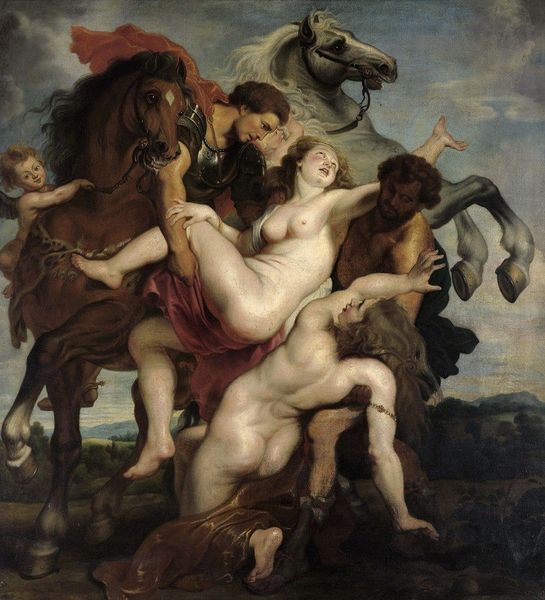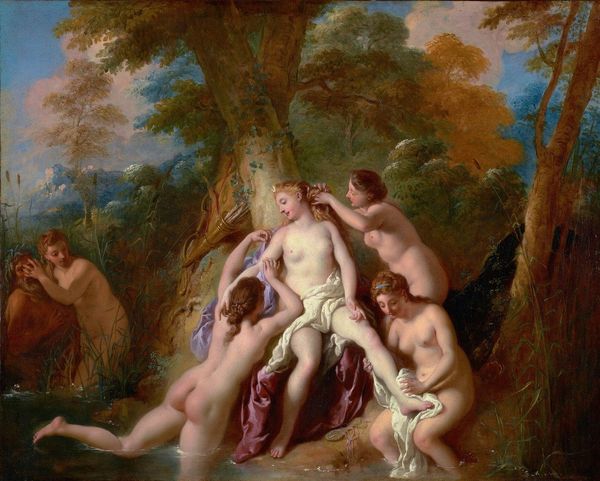
painting, oil-paint
#
baroque
#
animal
#
painting
#
oil-paint
#
figuration
#
oil painting
#
roman-mythology
#
mythology
#
human
#
genre-painting
#
history-painting
#
nude
Dimensions: 150 x 203 cm
Copyright: Public domain
Curator: The fleshiness in this painting, its tactile quality, it almost leaps out. Editor: It's certainly a striking composition! Here we see "Infant Jupiter Fed by the Goat Amalthea" by Jacob Jordaens, painted around 1635. It currently resides in the Louvre in Paris. Curator: Look at the material richness! Jordaens clearly relishes the textures – the goat's hair, the sheen of the human skin. The brushstrokes feel very deliberate, labor-intensive. I imagine the market demand for these mythic scenes would have played a part in determining this high-level of finish and luxurious detail. Editor: Absolutely. Paintings like these were often commissioned for aristocratic collections, reinforcing their patron's status through the display of classical knowledge and artistic patronage. Jupiter's story, hidden from his father Cronus, became a metaphor of wealth secured and destined to rise. Also, you can observe Jordaens’s use of classical themes alongside a visible taste for genre-painting, almost like a Dutch revelry suddenly appearing in ancient history. Curator: Yes, exactly! The artist does something particularly interesting with the goat. He really seems to emphasize the animal's agency and musculature, not just viewing it as some passive food source. One has to wonder about the practical realities of painting such a thing. How accessible were these animals? To what extent were animals understood merely as food or useful materials at that historical moment? Editor: Considering the political circumstances of that time, Antwerp enjoyed relative autonomy within the Spanish Netherlands, fostering a particular cultural exchange where art, myth, and society coexisted. Jordaens adapted classicism to his time by representing very ‘present’ individuals, as the robust features of those figures recall models taken directly from popular life. This work reflects on themes that still touch us. The protection and nurturing, for instance, shown in that maternal figure of Amalthea. Curator: Indeed, the interplay between these accessible visual elements and grand mythological themes creates an accessible tableau. Jordaens elevates the everyday by depicting familiar things alongside these supposedly lofty historical moments. Editor: By examining the artistic expression and the social significance intertwined, one can discover even further how history shaped the means through which art is seen, understood and celebrated even to this day. Curator: What an engaging glimpse into Jordaens' artistic world! It compels one to re-evaluate the interplay between labor, materials and high art production during his time.
Comments
No comments
Be the first to comment and join the conversation on the ultimate creative platform.
